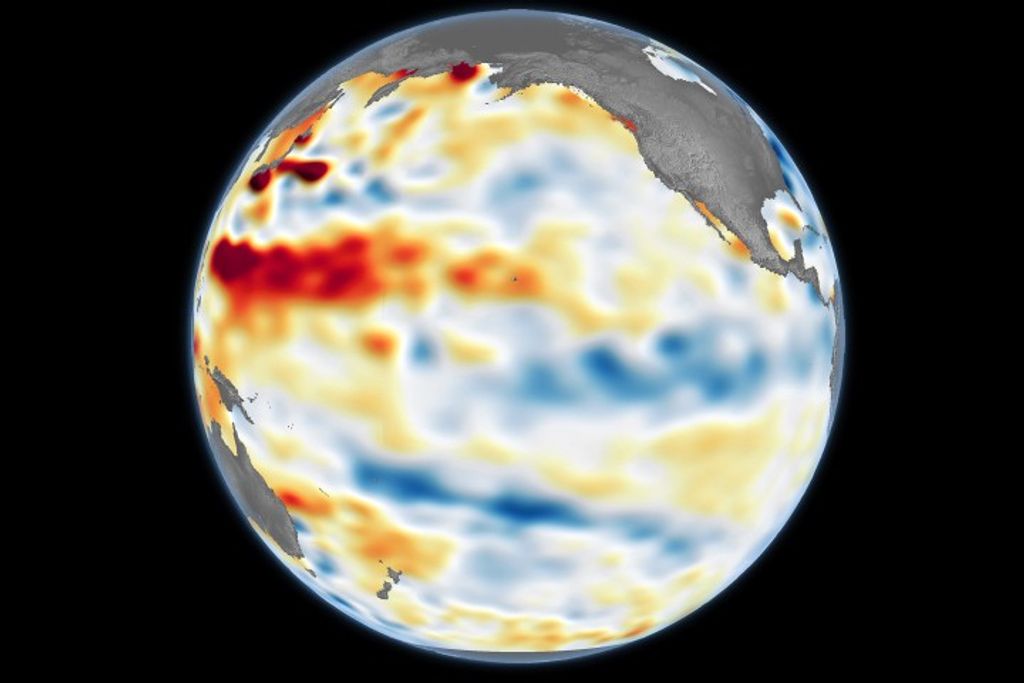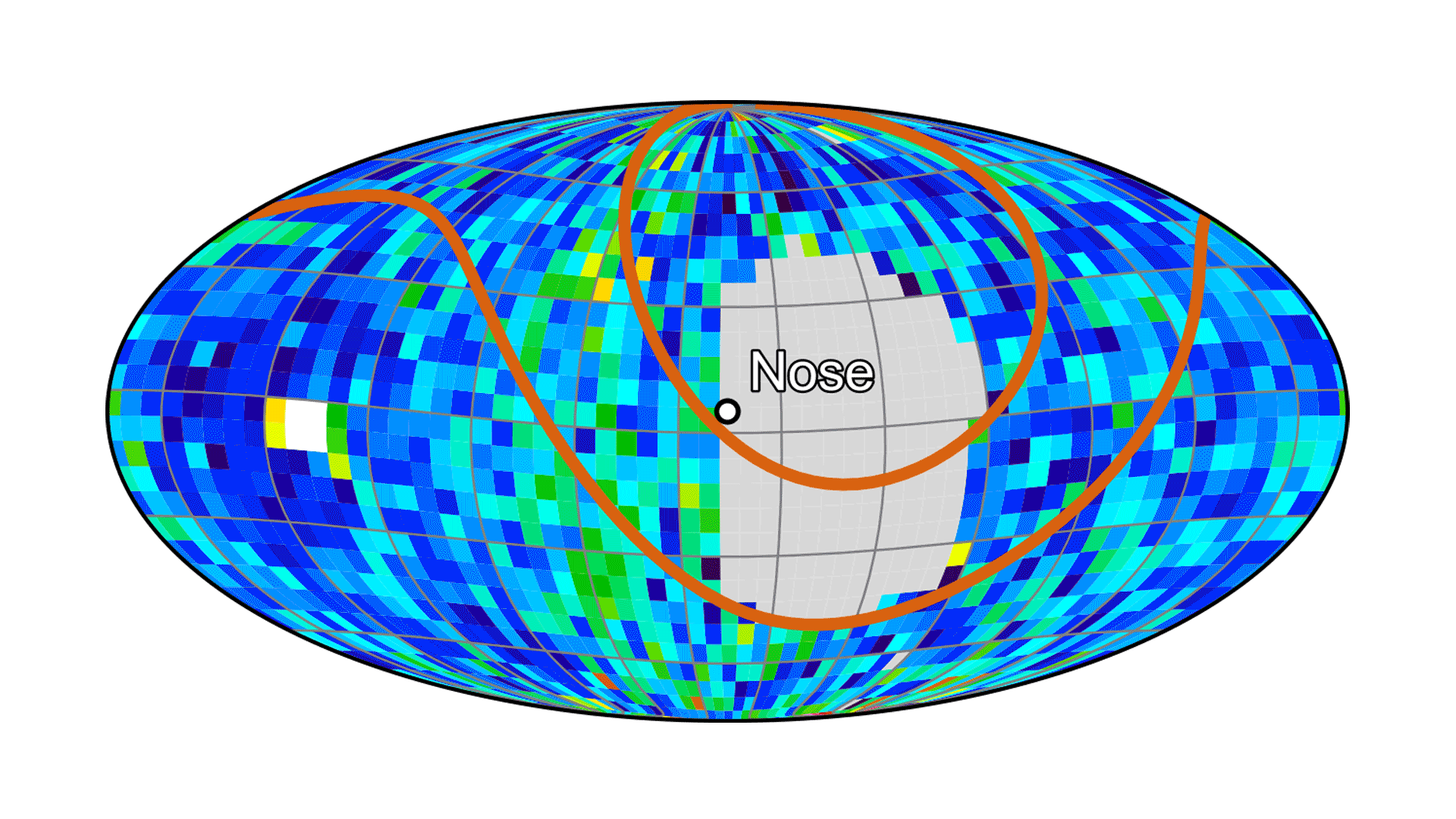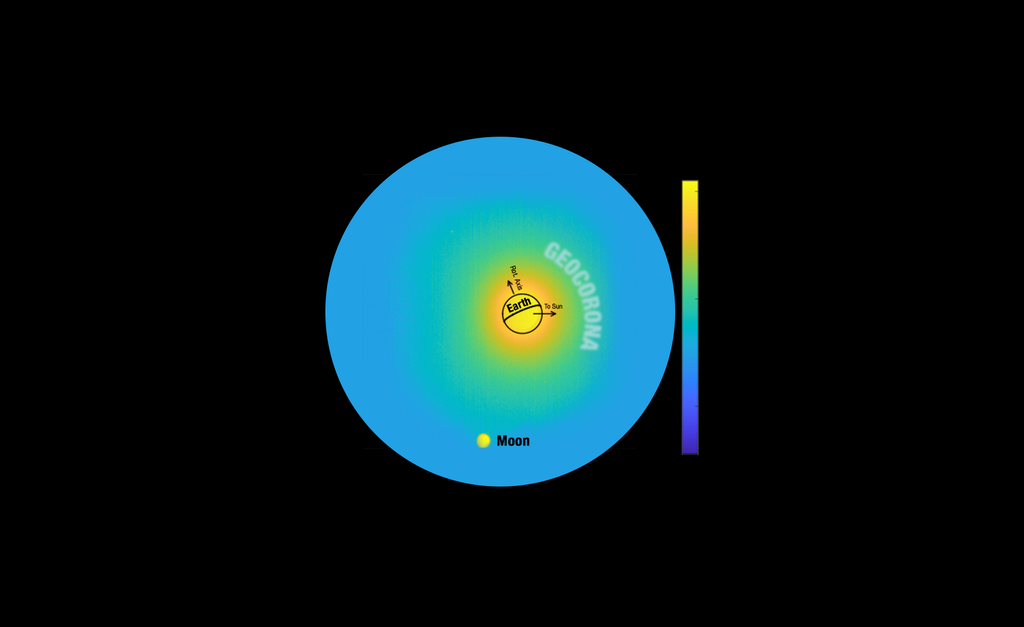ISS Daily Summary Report – 02/13/15
Automated Transfer Vehicle (ATV)-5 Hatch Closure: Today, Wilmore completed the final cargo loading for ATV-5. Samokutyaev and Cristoforetti completed the final closeout activities, including removal of the fire extinguisher and ИПК-1М gas masks, verification that all cargo is secured, and taking closeout photos of the final configuration of the hatches. They removed the Service Module (SM) quick release screw clamps and closed and latched the ATV and ISS hatches. ATV-5 undock is scheduled for Saturday, February 14th at 7:38am CST.
Aniso Tubule: Virts removed the Aniso Tubule sample chamber and holder from the scanning stage of the fluorescence microscope and deactivated components of the Multi-purpose Small Payload Rack (MSPR). Experimenters will examine growth modifications of Arabidopsis hypocotyls and the changing orientation of cortical microtubule under microgravity conditions in space. Scientists will further observe changes in dynamics of cortical microtubules and microtubule-associated proteins by observing Arabidopsis hypocotyls and microtubule-associated proteins with a fluorescence microscope.
BP Reg: Wilmore viewed a video demonstrating placement of leg cuffs, finger cuffs, and performance of rebreathing and then reviewed procedures for his only on-orbit BP Reg session. Thecrew configured hardware, set up a video camera and performed the Pulmonary Function System (PFS) rebreathing protocol with Continuous Blood Pressure Device (CBPD) operating. At the conclusion of the session, data was transferred and hardware deactivated and stowed. This investigation tests the effectiveness of an in-flight manipulation of arterial blood pressure (BP) as an indicator of post-flight response to a brief stand test, since space flight negatively impacts the regulation of BP on return to upright posture on earth. A Leg Cuff test induces a brief drop in BP following the release of a short obstruction of blood flow to the legs. The change in BP from pre-flight to in-flight will be used to predict those astronauts who might be susceptible to experience the greatest drop in BP in the post-flight stand test. A second objective of this investigation is to determine whether cardiac output calculated from the analysis of the finger blood pressure waveform provides an accurate estimate both pre-flight and in-flight by comparison with a rebreathing method.
Nanorack Cube Sat Deployer (NRCSD): Virts prepared the Maintenance Work Area (MWA), secured the NRCSD to the work surface area and then modified the existing Quad Deployers to install Safety Latches. Video will be recorded and still photos taken for downlink to ground teams.
Bone Densitometer: On Thursday, the crew setup the Glove Bag and frame contained in the Wet Lab Kit. The hardware was then positioned on an EXPRESS Rack front. A test sample was retrieved from Minus Eighty Degree Laboratory Freezer for ISS (MELFI) cold stowage and allowed to thaw overnight. Today, the crew performed a daily quality control check of displays, indicators and imagery set-up prior to operation of Bone Densitometer. The thawed test sample was secured on the exam tray and placed in the exam box. The crew loaded the exam box into the Bone Densitometer and executed an image acquisition. The test subject was returned to cold stowage, the crew disconnected and powered down the Bone Densitometer. Many of the conditions of spaceflight that adversely affect astronauts, such as the loss of bone density, can be studied effectively using mice flown in space. Approximately the size of a consumer microwave oven, the Bone Densitometer uses X-rays to measure the bone mineral density (and the lean and fat tissue) of mice living aboard the ISS. As a result, researchers hope to develop medical technology that will combat bone density loss in space and on Earth, helping millions of senior citizens who suffer from osteoporosis.
Node 2 Intermodule Ventilation (IMV) Duct Removal: As part of ongoing ISS reconfiguration activities, Virts removed the Node 2 Forward Port IMV ducting up to the inlet grill housing in preparation for International Docking Adapter (IDA) Control Panel 1 installation. He also covered the openings left from removing the ducts on the IMV Valve, IMV Inlet Grill, and Fire Partition. The ISS Program plans to establish two docking ports on the US On-orbit Segment compatible with the International Docking System Standard (IDSS). In the future, the docking adapters will be installed onto the existing Pressurized Mating Adapter (PMA)-2 and PMA3 interfaces. Each adapter will permanently convert a passive Androgynous Peripheral Attachment System (APAS) docking interface into a passive IDSS interface.
Mobile Servicing System (MSS) Operations: Yesterday afternoon, the Robotics Ground Controllers powered up the MSS and walked the Space Station Remote Manipulator System (SSRMS) off the Node 2 Nadir Power Data Grapple Fixture (PDGF) onto Mobile Base System (MBS) PDGF3. They then maneuvered the SSRMS into position and captured the Special Purpose Dexterous Manipulator (SPDM) PDGF. Later in the evening, they unstowed the SPDM from the Lab PDGF and configured the SSRMS and SPDM for the start of the Remote Power Control Module (RPCM) P12B_C removal and replacement operations scheduled for February 15th and 16th.
Today’s Planned Activities
All activities were completed unless otherwise noted.
- Ultrasound 2 – Scanning
- WRS – Recycle Tank Fill from EDV
- Recording Video Footage for Channel One / r/g 7893
- MSPR – Hardware Deactivation
- ANISO – Closeout Ops
- Ultrasound 2 – Scanning & Data Export
- Health Maintenance System (HMS) – Nutritional Assessment (ESA)
- BP REG – Experiment Ops
- VIZIR Experiment Ops. Tagup with specialists. See Note 4 / r/g 7964
- KOX2 Loop Health Monitoring. / r/g 7952
- ND2 – IFM Node 2 Intermodule Ventilation (IMV) Duct Removal
- Reconnection of Laser Infrared Rendezvous Imaging Sensors (LIRIS) Cable
- URAGAN. Observation and Photography using VSS / r/g 7968
- T2 Engineering Conference
- Preparation for ATV Hatch Closure (undocking prep) / r/g 7962
- Ultrasound Power Down
- CUBESAT – Crew preps the Maintenance Work Area Work Surface Area for payload use
- MRM2 comm config to support the P/L Ops
- Kulonovskiy Kristall Experiment Run. / r/g 7963
- CUBESAT – Installation of Safety Latches on Quad Deployers
- BP REG – Hardware Stowage
- Video Footage for Channel One / r/g 7893
- Connecting HDV Sony HVR-Z7E Camcorder and Running NASA MPEG-2 Viewer (to capture АО-ATV5 interface). (S-band)
- Removal of Quick Release Screw Clamps from SM AO – ATV5 interface and Video
- MRM2 Comm Reconfig for Nominal Ops
- KULONOVSKYI KRISTALL. Hardware Teardown / r/g 7963
- ATV-СУ Hatch Closure. Video of the interface
- SM AO – ATV5 Interface TV Downlink (if necessary)
- KULONOVSKYI KRISTALL. Copy and Downlink Data via РСПИ / r/g 7963
- ПрК-СУ Hatch Closure
- Deactivation of HDV Sony HVR-Z7E camcorder and closing of NASA MPEG-2 Viewer application
- ATV Hatch leak check
- PAO Event
- Food Frequency Questionnaire
Completed Task List Items
- None
Ground Activities
All activities were completed unless otherwise noted.
- Nominal Commanding
Three-Day Look Ahead:
- Saturday, 02/14: ATV-5 Undock, Weekly Cleaning, Crew Off Duty
- Sunday, 02/15: Crew Off Duty, Ground Robotics to replace RPCM P12B_C
- Monday, 02/16: EMU Fit Check, OH Tonometry, OH Blood Pressure Ops, AMO TOCA, Equipment Lock Preparation, EML, JAXA Earth Rim Observation Prep, EVA SAFER Latch Familiarization
QUICK ISS Status – Environmental Control Group:
| Component | Status |
| Elektron | On |
| Vozdukh | On |
| [СКВ] 1 – SM Air Conditioner System (“SKV1”) | On |
| [СКВ] 2 – SM Air Conditioner System (“SKV2”) | Off |
| Carbon Dioxide Removal Assembly (CDRA) Lab | Standby |
| Carbon Dioxide Removal Assembly (CDRA) Node 3 | Operate |
| Major Constituent Analyzer (MCA) Lab | Idle |
| Major Constituent Analyzer (MCA) Node 3 | Operate |
| Oxygen Generation Assembly (OGA) | Process |
| Urine Processing Assembly (UPA) | Standby |
| Trace Contaminant Control System (TCCS) Lab | Off |
| Trace Contaminant Control System (TCCS) Node 3 | Full up |

























